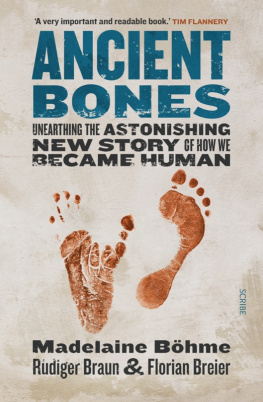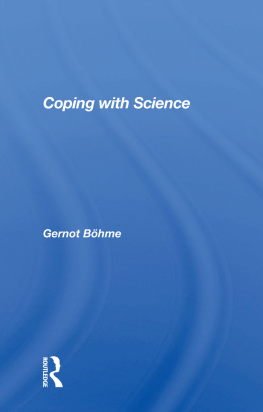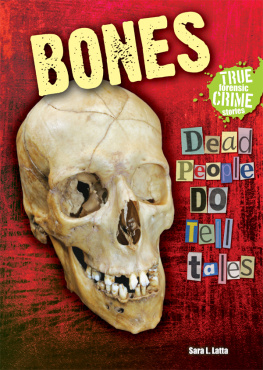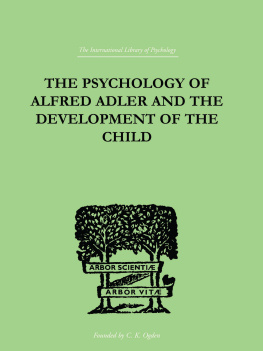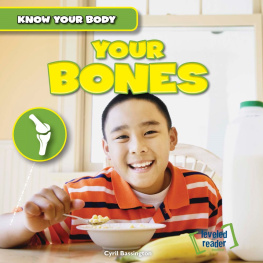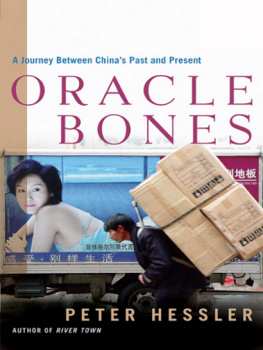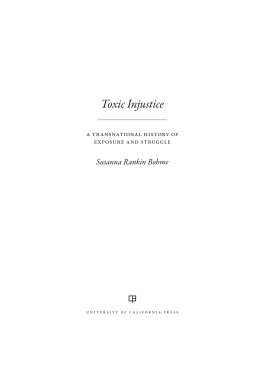Madelaine Böhme - Ancient Bones
Here you can read online Madelaine Böhme - Ancient Bones full text of the book (entire story) in english for free. Download pdf and epub, get meaning, cover and reviews about this ebook. year: 2020, publisher: Scribe Publications Pty Ltd, genre: Romance novel. Description of the work, (preface) as well as reviews are available. Best literature library LitArk.com created for fans of good reading and offers a wide selection of genres:
Romance novel
Science fiction
Adventure
Detective
Science
History
Home and family
Prose
Art
Politics
Computer
Non-fiction
Religion
Business
Children
Humor
Choose a favorite category and find really read worthwhile books. Enjoy immersion in the world of imagination, feel the emotions of the characters or learn something new for yourself, make an fascinating discovery.
- Book:Ancient Bones
- Author:
- Publisher:Scribe Publications Pty Ltd
- Genre:
- Year:2020
- Rating:5 / 5
- Favourites:Add to favourites
- Your mark:
- 100
- 1
- 2
- 3
- 4
- 5
Ancient Bones: summary, description and annotation
We offer to read an annotation, description, summary or preface (depends on what the author of the book "Ancient Bones" wrote himself). If you haven't found the necessary information about the book — write in the comments, we will try to find it.
Ancient Bones — read online for free the complete book (whole text) full work
Below is the text of the book, divided by pages. System saving the place of the last page read, allows you to conveniently read the book "Ancient Bones" online for free, without having to search again every time where you left off. Put a bookmark, and you can go to the page where you finished reading at any time.
Font size:
Interval:
Bookmark:

ANCIENT BONES
Madelaine Bhme, geo-scientist and palaeontologist, is professor of terrestrial palaeoclimatology at the University of Tbingen and founding director of the Senckenberg Center for Human Evolution and Palaeo-environment. She is one of the most esteemed palaeoclimatologists and palaeoenvironmental scientists examining human evolution with regard to changes in climate and environment. Bhme lives in Tbingen, Germany.
Rdiger Braun is a science journalist interested in translating cutting-edge science into gripping stories for the general public to effect societal change. He studied biology and philosophy at the Julius Maximilian University in Wrzburg. He contributes to Stern and Geo. Braun lives in Ahrensburg, Germany.
Florian Breier is a science journalist and works as a filmmaker and author for ZDF television, arte , SWR broadcasting, and others. Breier lives in Cologne, Germany.
Jane Billinghurst is an author and a translator of nonfiction books from German into English.
Scribe Publications
1820 Edward St, Brunswick, Victoria 3056, Australia
Published by Scribe 2020
Wie wir Menschen wurden by Madelaine Bhme, Rdiger Braun & Florian Breier 2019 by Wilhelm Heyne Verlag, a division of Verlagsgruppe Random House GmbH, Mnchen, Germany
Ancient Bones (English language translation) 2020 by Jane Billinghurst Foreword 2020 by David R. Begun
All rights reserved. Without limiting the rights under copyright reserved above, no part of this publication may be reproduced, stored in or introduced into a retrieval system, or transmitted, in any form or by any means (electronic, mechanical, photocopying, recording or otherwise) without the prior written permission of the publishers of this book.
Interior illustrations by Nadine Gibler Informationsdesign
Artists renditions by Velizar Simeonovski
9781922310347 (Australian edition)
9781925938692 (ebook)
A catalogue record for this book is available from the National Library of Australia.
scribepublications.com.au
CONTENTS
Part : El Graeco and the Split Between Chimpanzees and Humans
1. : The Detective Work Begins
2. : The First Fossil Apes From Pikermi
3. : Bruno von Freybergs Discovery
4. : A Journey Into the Catacombs Beneath the Nazi Party Rally Grounds in Nuremberg
5. : Ancient Bones in a High-Tech Lab
Part : The Real Planet of the Apes
6. : A Short History of the Search for Our Origins
7. : The Golden Age of Ape Evolution
8. : Great Apes in Oak Forests
9. : Was Udo a Missing Link?
Part 3: The Cradle of Humanity: Africa or Europe?
10. : Still an Ape or an Early Hominin?
11. : Puzzling Prints of an Ancient Biped
12. : The Shady Case of Sahelanthropus
13. : The Out-of-Africa Theory Begins to Wobble
Part : Climate Change as a Driver of Evolution
14. : Reconstructing the Environment Is Key
15. : Landscape and Vegetation in El Graecos Time
16. : A Gigantic Desert Becomes an Insurmountable Obstacle
17. : The Mediterranean Dries Out
Part : What Makes Humans Human
18. : Lots of Room for Creativity
19. : Curiosity About the Unknown
20. : The Running Human
21. : How Diet Influenced the Development of the Brain
22. : From Alarm Cries to Culture
Part : The Lone Survivor
23. : The Problem With the Family Tree
24. : Humans From Denisova Cave
25. : The Rational Human
FOREWORD
I AM HONORED TO call Madelaine Bhme a friend. I have never met anyone quite like her, and I have met just about everyone working on the fossil evidence of ape and human evolution over the past forty years. Her knowledge of the fossil record and geology are encyclopedic and her enthusiasm for research is infectious.
Madelaine and I had been following each others work for some time before we finally met in Istanbul at a conference in 2013 . Shortly after that, she invited me to work with her on an intriguing fossil, El Graeco, which she described with the unique combination of historical documentation, geological and paleontological expertise, and personal passion that typifies this book. The invitation came at a particularly exciting time for me, as I had been promoting the idea that Europe was not the backwater of ape evolution, contrary to what was widely claimed by many researchers, mostly those working in Africa.
Under Madelaines direction, our work on El Graeco has brought the hypothesis that Europe had a central role in great ape evolution back to the attention of our skeptical colleagues. It has also revealed her dogged determination to extract as much data as possible from the most unlikely of sources. I had studied this fossil in the mid- 1990 s, when it was on loan to the Natural History Museum in London, England. I concluded that it was unique, but I did not know what to make of it at the time, given its somewhat poor state of preservation. By using high-resolution X-rays (micro computed tomography) to look inside the fossil, Madelaine and her student Jochen Fuss were able to identify characteristics that distinguished El Graeco from other fossils from Europe and linked it with homininsthat is, humans and human ancestors that evolved after our lineage branched off from that of the chimpanzee. Madelaines genius is encapsulated by her realization that she could date the El Graeco site from a specimen hidden away in a long-forgotten archive using the orientation of crystals inside the bone. Who would have thought of that?
The narrative that Madelaine Bhme unveils in this book is as compelling as it is controversial. She brings together a wealth of information from history, geology, paleontology, and archeology to call into question some of the most treasured ideas in paleoanthropology, dogma in fact, about ape and human origins. She is refreshingly free of the biases that have led many to ignore data that contradict prevailing hypotheses. Her book sheds much-needed light on alternative interpretations that are supported by new discoveries but met with predictable skepticism. All the details of Madelaines narrative may subsequently be challenged as new data and new analyses are published, but she has opened a new frontier of research and is asking new questions, long repressed by the paleoanthropological establishment. Many of the ideas expressed in this book will one day find their way into textbooks on human evolution and inspire readers and students alike to ask themselves, Why didnt I think of that?
Madelaine describes some of the difficulties that paleoanthropologists working in Eurasia confront when their evidence points to interpretations that differ from the widely accepted view that African apes and humans first appeared and evolved exclusively in Africa. Though the Africanist perspective can be traced back to Darwin, the great evolutionary biologist was more open-minded than many of our colleagues today, suggesting, as Madelaine notes, that the ape from Europe known as Dryopithecus may be a relative of African apes and humans. Darwin was marvelously uncertain, as any scientist should be in the absence of direct evidence, of what he called the birthplace and antiquity of man. We should all be so open-minded. More importantly, Darwin recognized the significance of what we call in todays parlance land mammal dispersal events or, as Darwin put it, migration on the largest scale. An important theme in this book is about dispersals, the movement of animals, including apes, back and forth between Eurasia and Africa. We know this happened often. In fact, the animals that typify the African savannah today mostly arrived from Greece and Turkey. Graecopithecus or its kin were probably among them. Animals do not carry passports and do not worry about borders.
Next pageFont size:
Interval:
Bookmark:
Similar books «Ancient Bones»
Look at similar books to Ancient Bones. We have selected literature similar in name and meaning in the hope of providing readers with more options to find new, interesting, not yet read works.
Discussion, reviews of the book Ancient Bones and just readers' own opinions. Leave your comments, write what you think about the work, its meaning or the main characters. Specify what exactly you liked and what you didn't like, and why you think so.

